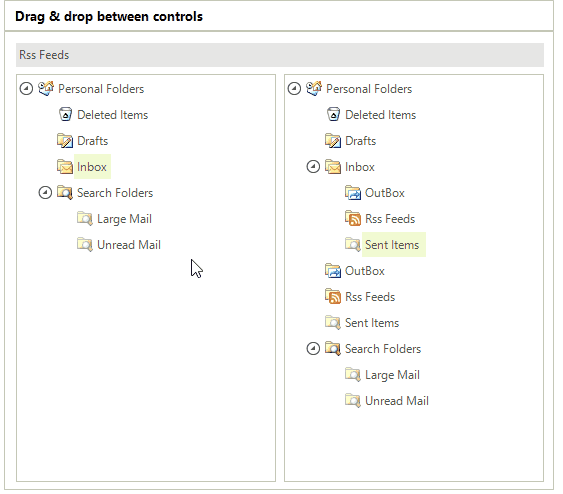

We can derive from DataGridView and add the required tree functionality to it. NET DataGridView control as the basis and extend its look and functionality as if we incorporated TreeView into one of its columns. To implementing TreeView in DataGridView, we can use the standard. WinForms DataGridView with TreeView features Let's look at both approaches more carefully. Second, you can use another control like our 10Tec WinForms grid that provides you with both DataGridView and TreeView features. First, you can try to extend the standard DataGridView to add TreeView functions to it. If you need the functionality like this in your application, you can go two different ways. It is not only a static visual representation: the nodes in the first column are clickable like in a real TreeView control so you can collapse/expand rows.
#Treeview winforms how to#
Can you please advise how to adapt your above code to populate treeview using above columns? During the process I want to assign ChildName/ParentName as the TreeNode text(displyName) and Child_ID/Parent_ID as the treenode Tag which I want to use in another application.The grid above looks like TreeView in DataGridView control. net.Ĭhild_ID ChildName Parent_ID ParentName Depthįor each child object there is a Parent ID. I am bit newbie with treeview handling using VB. I am exporting a table from SQL Server into Access database from which I need to build a treeview and assign values to each nodes. Thank you very much for taking the time to write this useful tutorial! When you run the code, the TreeView should appear as follows: This will cause the method to load all of its child nodes. The method call passes in the node’s Id and the node itself. It then calls itself, making the method recursive. The code then loops through those items and adds the nodes to the parent node. The filteredItems variable contains the results of a lambda expression finding all of the items in the list with the passed in parentId. The parentNode is the TreeView node under which the items are added. The code will find all items in the list with the defined parent Id. The parentId is the Id value associated with the parent node. The PopulateTreeView method has two parameters: parentId and parentNode. Private Sub PopulateTreeView(ByVal parentId As Integer, _ĭim filteredItems = treeViewList.Where(Function(item) _ Var filteredItems = treeViewList.Where(item =>įoreach (var i in filteredItems.ToList())ĬhildNode = (i.Text) Private void PopulateTreeView(int parentId, TreeNode parentNode) The PopulateTreeView method uses recursion to populate the TreeView from the list.

It then calls the PopulateTreeView method (shown below). The Add method of the list sets the data into the list. This code defines a generic List that contains the set of TreeViewItem instances. TreeViewList.Add(New TreeViewItem() With ) Private treeViewList As New List(Of TreeViewItem) ParentID = 3, ID = 5, Text = "Child of second child node" }) ParentID = 3, ID = 4, Text = "Child of second child node" }) ParentID = 1, ID = 3, Text = "Second child node" }) ParentID = 1, ID = 2, Text = "First child node" }) ParentID = 0, ID = 1, Text = "Parent node" }) In the WinForm containing the TreeView control, add the code to build the list as shown below. It also has a Text property that contains the text of the TreeView node. The class defines an Id associated with the item and a ParentId defining the Id of the parent item (that is the item under which this item will appear in the TreeView). (In VS 2010, VB will have auto-implemented properties as well.)

It is using Public fields instead of Public Properties as it should. The VB code is just me being lazy tonight. The C# code uses auto-implemented properties to short-cut the code. Then it demonstrates how to use recursion to populate the TreeView control from the list.įirst, create a class that will store the data for the TreeView. This post details first how to build a list containing the data to display in a WinForms TreeView control.


 0 kommentar(er)
0 kommentar(er)
